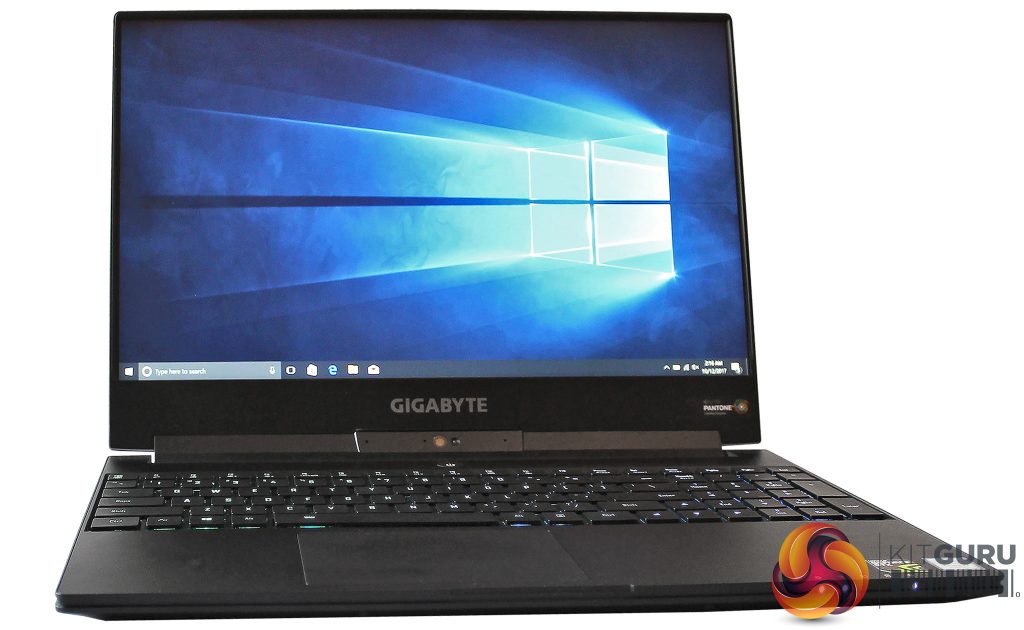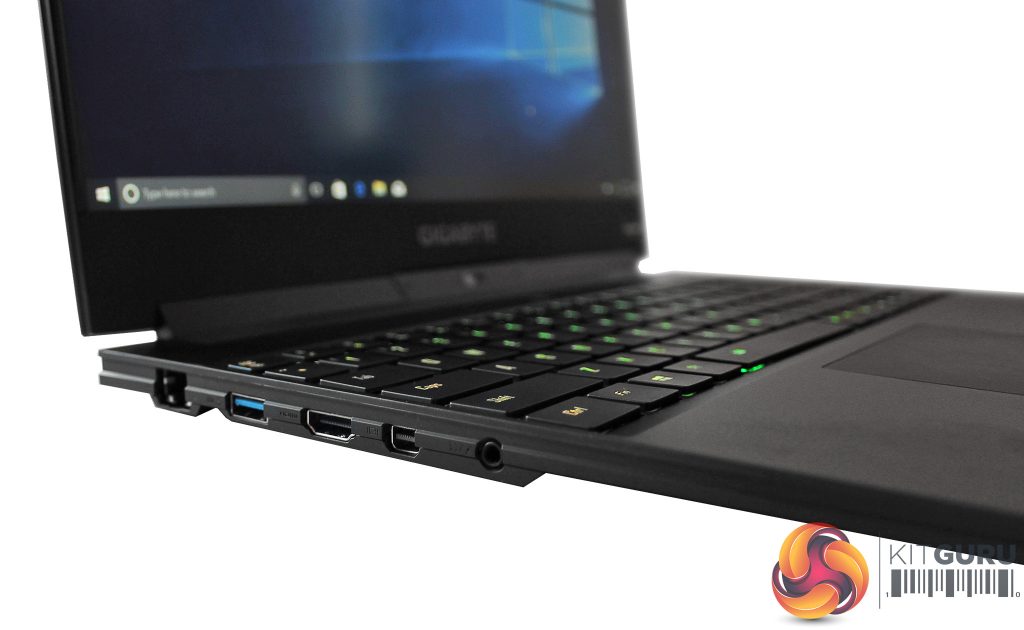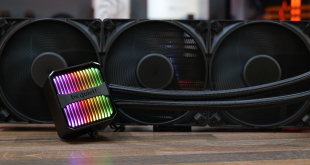The Gigabyte is a smart and understated system where the outside is dominated by the screen – and the inside is dominated by high-end components.
The Aero gets its graphical grunt from a GTX 1070. It’s one of Nvidia’s best mobile gaming chips, and the firm has tried to make it better with its Max-Q variant – an altered version of the chip that Gigabyte has used in this machine.
Max-Q GPUs are new versions of Nvidia’s mobile Pascal cores. They’ve still got the same number of stream processors and the same memory allocation, but Nvidia is allowing laptop firms to downclock the cores to save power – and to fit powerful GPUs inside smaller and slimmer notebooks.

The Gigabyte’s GTX 1070, for instance, retains 8GB of GDDR5 memory and 2,048 stream processors, but the core runs at 1,215MHz with a GPU Boost peak of 1,379MHz. That’s a step down from the 1,442MHz and 1,645MHz speeds of the conventional mobile GTX 1070.
That will affect performance, of course, but it should also help keep noise and heat down, and improve battery life. The normal GTX 1070 has a TDP of 120W, but the Max-Q version cuts that down by between 30W and 40W.
The cut-back GPU is paired with the familiar Core i7-7700HQ, which runs at a stock speed of 2.8GHz with a boost peak that’s 1GHz higher. That’s ample power for work and play, and perfect for a laptop like this.
It’s paired with 16GB of dual-channel memory and a 512GB NVMe SSD, but there’s no hard disk – so sizeable games collections may simply not fit on this machine. Connectivity is good, with dual-band 802.11ac wireless and Gigabit Ethernet on-board – handy for professional users, with the latter not included in the Razer.

The Gigabyte is regulated by several bespoke software tools, but none are particularly impressive. The Smart Manager gives access to a bundle of simple screen, power and settings toggles that are found elsewhere in Windows alongside some alternative fan modes. There’s a Smart Dashboard to monitor clock speeds, fan speeds, battery levels and temperatures.
The most useful tool is Smart Fusion, which is borrowed directly from Gigabyte’s more gregarious gaming laptops and can be used to change the keyboard colours and record macros.
Razer’s machine has a similar specification. It’s got a GTX 1060 graphics chip that isn’t a Max-Q model, so it wields the full power of that chipset, and it’s got the same processor and 16GB of memory. The model we reviewed also had a 1080p screen.
The Aero is an attractive notebook that straddles several different markets. Gigabyte says this machine is designed for professional users, and it’s clearly got the power to handle high-end productivity tools – but it’s got enough grunt for gaming, too. And, no matter the intended use of this machine, having this kind of power inside such a smart, slim chassis is never a bad thing.
 KitGuru KitGuru.net – Tech News | Hardware News | Hardware Reviews | IOS | Mobile | Gaming | Graphics Cards
KitGuru KitGuru.net – Tech News | Hardware News | Hardware Reviews | IOS | Mobile | Gaming | Graphics Cards



Prefer the proper heavy gaming laptops like my MSI laptop from 2014. Don’t see the point of these thin max-q laptops at all.
That’s an interesting cpu the ‘77700HQ ‘ one to many 7’s but then again It might be new knowing Intels naming system
Being able to use it for something else than gaming. Like sending email at the beach for 8 hours straight on battery power, bringing it on vacation without breaking the back, etc.
I like those huge bricks myself, even bought a MSI GT80S with 18 inch screen.
But I can see the point in this laptop. Mobile power.
Given that this is virtually the same but with more power, how come it got a whole point less than the Aero 15? Is it because of the heat issues when stressing both the CPU and GPU simultaneously?